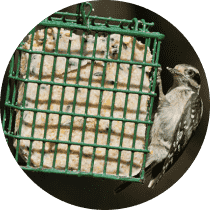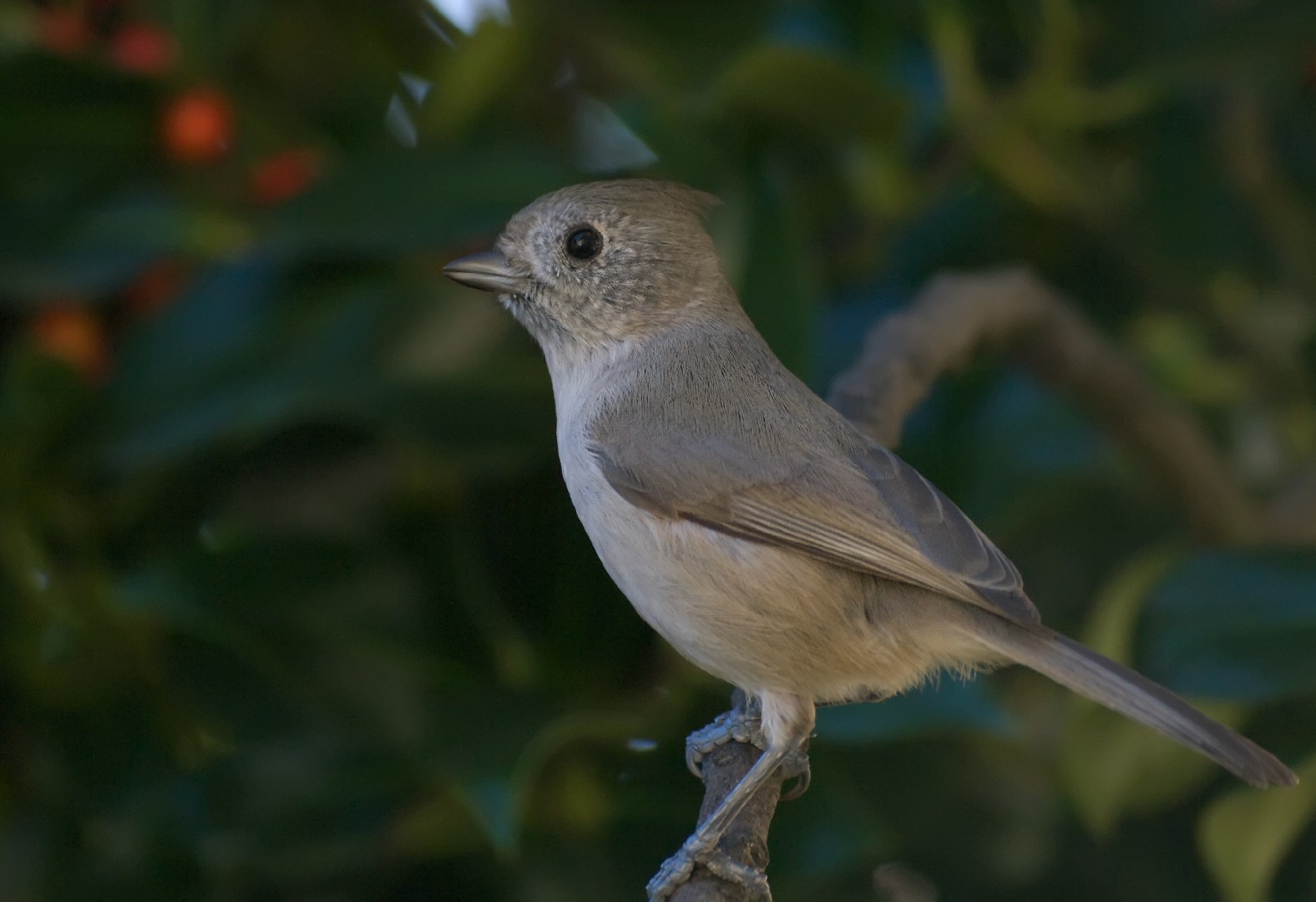Oak Titmouse
A species of Titmice Scientific name : Baeolophus inornatus Genus : Titmice
Oak Titmouse, A species of Titmice
Botanical name: Baeolophus inornatus
Genus: Titmice
Content
Description People often ask General Info
Description
The tiny, drab-looking oak Titmouse lives in dry oak forests and is known as "the voice and soul of the oaks." It mates for life, and husband and wife defend their territory year-round. They sleep in cavities where they can find them, but will also seek out a twig within dense foliage to simulate a roost.
Size
13 cm
Life Expectancy
9 years
Nest Placement
Cavity
Clutch Size
3 - 9 eggs
Incubation Period
1 - 2 broods
Number of Broods
14 - 16 days
Nestling Period
16 - 21 days
Feeding Habits
Oak Titmouse's diet includes seeds, nuts, berries, insects, and invertebrates. It gleans prey from bark and foliage typically under 30 feet, probes crevices, and might catch insects mid-air. It holds large items with its foot, consuming or storing them after securing them on elevated perches.
Habitat
Oak Titmouse thrives in warm, open, and dry woodlands, particularly amidst oak and pine trees. It inhabits elevations where these trees dominate and can adapt to brushy areas like scrub oaks. Geographically, oak Titmouse ranges from southwest Oregon to northwest and some parts of south Baja California, and may also utilize juniper or open pine forests and mixed pinyon or California juniper woodlands.
Nest Behavior
The female oak Titmouse is solely responsible for nest building while the male provides food during construction. The nesting site is jointly selected within their territory. Oak Titmouse's reuse nests in subsequent years, with either the same pair or new occupants taking up the space.
Nest Characteristics
Oak Titmouse typically selects natural tree cavities up to 40 feet high for nesting, showing preference for natural cavities over those excavated by woodpeckers but will also adapt to an array of alternate structures or nest boxes. Nest construction, taking 4-10 days, involves grass, moss, hair, and feathers, along with diverse materials like shredded bark, wool, and snakeskin.
Dite type
Insectivorous
People often ask
General Info
Feeding Habits
Bird food type

Black Oil Sunflower Seeds

Hulled Sunflower Seeds

Safflower

Suet

Peanuts

Peanut Hearts

Mealworms
Bird Feeder Type

Large Tube Feeder

Small Tube Feeder

Suet Cage

Large Hopper

Small Hopper

Platform
Sounds
Call
Recording location: United States
Call
Recording location: United States
Song
Recording location: United States
Song
Recording location: United States
Behavior
The oak Titmouse is particularly active during the day, busily foraging among the lower canopies of oaks and neighboring trees. These birds exhibit a unique flying pattern, characterized by a shallow undulating motion. Notably monogamous, oak Titmouses form lifelong pair bonds early and maintain year-round territorial defense, distinctively avoiding winter flocking behavior common in related species. They display a crest-raised, wing-quivering, and scolding response when confronting intraspecific threats. Predation risk is significant for the oak Titmouse, with diverse threats from both avian predators and land-based attackers; however, they are known to courageously mob predators as a defensive strategy, often rallying alongside other small birds.
Species Status
Not globally threatened.
